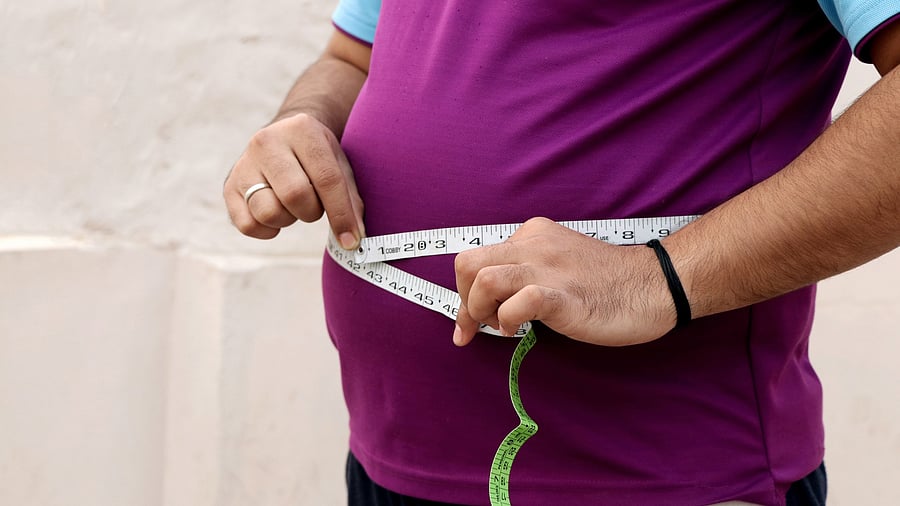
A person measures his waist in this representative image
Credit: iStock Photo
Working from home and using quick commerce apps have made many in Bengaluru more sedentary than before, experts say.
A study by the highly regarded medical journal The Lancet sheds light on the growing obesity epidemic in India. It says India may have a staggering 45 crore obese or overweight people over the age of 25 years by 2050. Obesity is when a person’s body mass index is greater than or equal to 30.
Metrolife spoke to health experts in Bengaluru to understand why the problem is on the rise.
Priyanka Singh, clinical dietician and wellness consultant, has seen significantly more people contacting her for weight loss since the pandemic, and a majority are between 30 and 45.
“As a result of working from home, people, especially middle-aged corporate workers, have adopted a sedentary lifestyle. A typical working professional’s day begins at the desk and ends there. Forget exercise, there is minimal movement,” she says.
The growing popularity of quick commerce apps is affecting lifestyle habits.
“In the last few years, we have become way too used to them. The services are more popular in Bengaluru than in any other Indian city. From food to cobbler services, everything is online. Earlier, if you needed a new shirt at short notice, you would go to the nearest store. But now, startups even deliver clothes in less than 30 minutes,” says Afshan Khan, clinical nutritionist. There is no need for people to step out of the house, and that is alarming, she notes.
Afshan advises her clients, mostly millennials, to limit the use of quick commerce services. “They are useful for senior citizens and the differently abled. There is no need for able-bodied people to depend on them,” she says.
Diet pitfalls
Priyanka believes another reason for the increase in weight gain is the rise of misinformation through social media.
“Every other day, there is a new diet trend. And a lot of it comes along with misinformation. For example, many have given up rice. But, at the same time, they happily eat ragi biscuits laden with bad fats and sugars,” she tells Metrolife.
Body positivity
Dr Vinayak S, internal medicine specialist, believes the body positivity movement has been misunderstood by many, especially those between 15 and 40.
“These are generations that spend more time online. The point of the movement was to get rid of unrealistic ideas of physical beauty and build a positive body image. But today, the movement has made the topic of weight a taboo and ends up supporting unhealthy lifestyle habits,” he says.
Impact of obesity
One of the biggest risk factors for diabetes and hypertension is obesity, says Dr Anil Agadi, general surgeon. "For many in the city, obesity is the underlying cause for most non-communicable diseases. Of the non-communicable diseases, a major chunk are lifestyle diseases. In India, while youngsters in their 20s have become more health conscious, it is those between 30 and 50 who are prone to lifestyle diseases like diabetes and hypertension, " he says.
He also sheds light on the 'middle obesity' phenomena. "This is something you notice in South Asia and Southeast Asia, where people don't have fat arms or legs, but the fat is instead only concentrated in the middle portion, especially the stomach. This is primarily because of rice intake," he says.